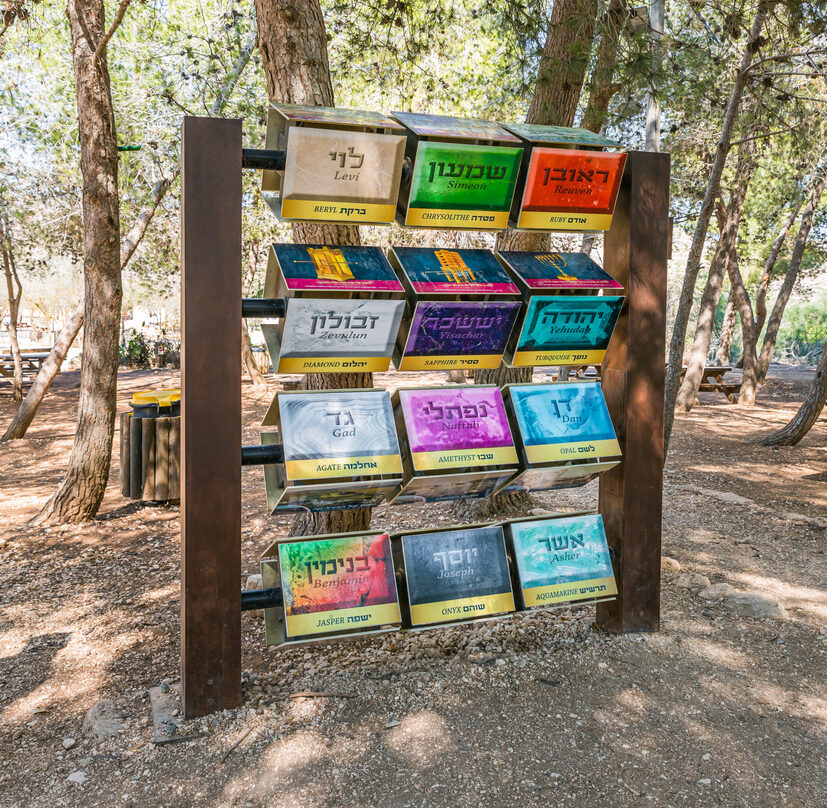In this week’s Torah portion, Parshat Pikudei (Exodus 38:21 – 40:38), we read of different tribes as key identifiers for Betzalel, the leading builder of the Tabernacle, as well as of Ohaliab, the master craftsman of that new sacred space for the Israelites. We read in Exodus 38: 23-24:
Now Bezalel, son of Uri, son of Hur, of the tribe of Judah, had made all that
had commanded Moses;
at his side was Oholiab son of Ahisamach, of the tribe of Dan, carver and designer, and embroiderer in blue, purple, and crimson yarns and in fine linen.
Midrashic commentaries interrogate the significance of their respective tribal belongings. Of Ohaliab, we read in Shemot Rabbah that his efforts on the Tabernacle earn
praise for him, praise for his father, praise for his family, praise for the tribe from which he emerged. And it mentions and demeans: “[The son of the Israelite woman blasphemed God’s Name and cursed…] and the name of his mother was Shelomit daughter of Divri, of the tribe of Dan” (Leviticus 24:11) – disgrace for her, for her father, for her family, and for the tribe from which she emerged….
Why must we at once praise Ohaliab and dwell on another member of the same tribe who merits condemnation? Why did Ohaliab need to be associated with someone who blasphemed God when his life was one of generativity, punctuated by sacred service to the Israelite people? It feels surprising and stark – until we read on.
Shemot Rabbah continues this chain of logic with respect to the tribe of Judah (and, by extension, Bezalel): “It mentions and demeans: ‘Akhan, son of Carmi, son of Zavdi, son of Zera?, of the tribe of Judah’ (Joshua 7:18) – disgrace for him, disgrace for his father and for his family, and disgrace for the tribe from which he descended.”
It seems that the Midrash is establishing how members of either (and, perhaps by extension, any) tribe could be as productive and significant as Bezalel or as disgraceful as Akhan, as skilled and giving of oneself as Ohaliab or as blasphemous as Shelomit.
Another Midrash adds a dimension to this discussion of the two tribes. We read in Midrash Tanchuma:
No tribe was greater than Judah, and none was more lowly than Dan, which descended from one of the maidservants, as it says: And the sons of Dan: Hushim (Gen. 46:23). The Holy One, blessed be God, declared: Let him come and join with Judah so that no tribe might become arrogant, for both the great and the lowly are equal in the sight of the Holy One, blessed be God. Rabbi Hanina maintained: No one should become arrogant because of the honors bestowed upon him.
Politically, Dan was the weakest of the tribes, while Judah was the strongest. Each tribe had people, good and bad – warranting honor and disgrace.
Together, these Midrashic commentaries suggest that – in addition to the unique skills that Ohaliab (from Dan) and Bezalel (from Judah) brought to the construction of the Tabernacle – the two of them were of symbolic significance as a duo.
Bezalel maintained the stronger position in the relationship – much as his tribe did with respect to the one to which Ohaliab belonged. Yet both came together to create something majestic with the rest of the Israelites and for the rest of the Israelites. Their tribal identities were not subsumed within a grand project but rather brought to the fore as a demonstration of strength through difference and the universal ability of Israelites of all backgrounds to contribute to their shared future.
At a time of fracture within American Jewish communities and fissures between them, this Torah portion calls us to become exemplars of unity amid difference – living symbols, which may in time become interwoven into the stories and memories of our people.

Joshua Stanton is Rabbi of East End Temple in Manhattan and the Director of Leadership Formation at CLAL – The National Jewish Center for Learning and Leadership. He serves on the Board of Governors of the International Jewish Committee for Interreligious Consultations, which liaises on behalf of Jewish communities worldwide with the Vatican and other international religious bodies.


